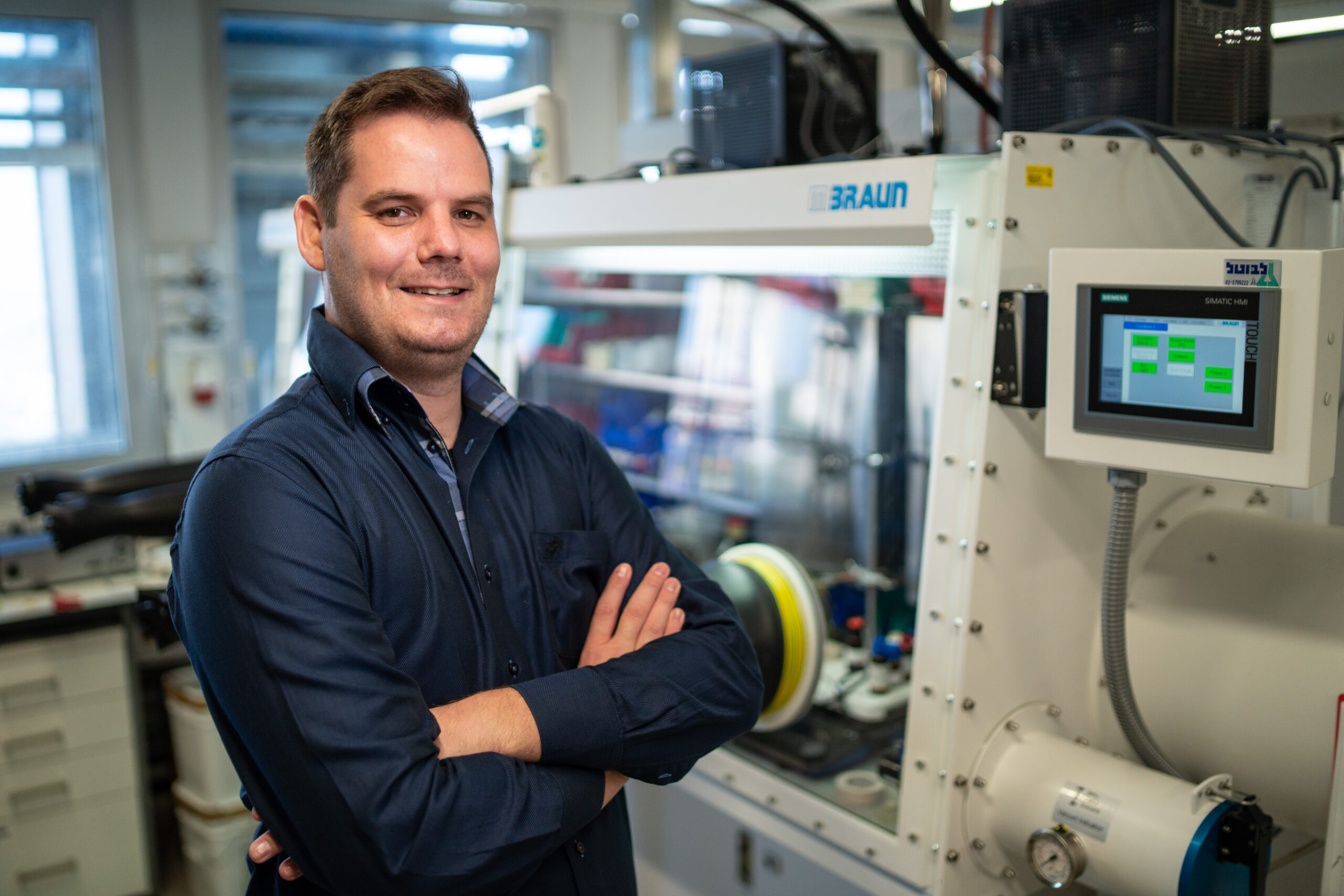

Graham de- Ruiter

CV
Transition Metal Complexes in Materials Chemistry
Despite recent advances in organometallic and inorganic chemistry, the activation and conversion of small molecules under ambient conditions remains challenging. In our lab we try to solve these challenges by designing new inorganic/organometallic materials that are able to use photons and electrons in order to convert these small molecules (e.g. CO2, N2, O2) into value added chemicals.
Our approach focusses on synthesizing novel transition metal complexes that – upon light irradiation – are able to:
- Change their chemical environment
- Utilize photo-redox process to generate highly oxidizing/reducing metal centers
By self-assembling these metal complexes unto solid surfaces, we can use the superior properties of inorganic and semiconductor materials – in light-harvesting and electron transfer – to fabricate new supramolecular architectures that can be used in catalysis and small molecule activation. The physicochemical properties of these newly synthesized materials will be investigated with a wide variety of analytical techniques including spectroelectrochemistry.
Other research directions will build upon our experience in small molecule activation, and use these principles to develop a new class of organometallic polymers that relies the activation of N2.
Chiroptical Switching in Supramolecular Architectures
The spatial separation of chemical reactions is commonplace in nature, e.g. in the active site of enzymes or in cellular compartments. This separation enables various types of reactivity not attainable by single-pot solution-based chemistry. By employing such a spatial separation in surface-confined supramolecular architectures, new material properties are proposed that cannot be obtained in simple static molecular assemblies.
In our research, compartmentalization will be achieved by the sequence-dependent Layer-by-Layer (LbL) assembly of molecular components, where photoswitchable chiroptical molecules will be used in order to control – in real time – the chirality of the resulting molecular assembly. Once the physicochemical properties are established, new avenues in materials chemistry and enantioselective catalysis will be explored.
Graham returned to Israel in 2017 to start his independent career at the Technion – Israel Institute of Technology (Haifa), where he is an assistant professor in the Schulich Faculty of Chemistry
Selected Publications:
- Graham de Ruiter, Kurtis M. Carsch, Sheraz Gul, Ruchira Chatterjee, Niklas B. Thompson, Michael K. Takase, Junko Jano, and Theodor Agapie. Accelerated Oxygen Atom Transfer and C−H Bond Oxygenation by Remote Redox Changes in Fe3Mn-Iodosobenzene Adducts. Angew. Chem. Int. Ed., 2017, 56, 4772-4776.
- Graham de Ruiter, Niklas B. Thompson, Davide Lionetti, and Theodor Agapie. Nitric Oxide Activation by Distal Redox Modulation in Tetranuclear Iron Nitrosyl Complexes. J. Am. Chem. Soc. 2015, 137, 14094–14106.
- Graham de Ruiter, Michal Lahav, Guennadi Evmenenko, Pulak Dutta, Domenico A. Christaldi, Antonino Gulino, and Milko E. van der Boom. Composite Molecular Assemblies: Nanoscale Control and Spectroelectrochemical Diversity. J. Am. Chem. Soc. 2013, 135, 16533-16544.
- Graham de Ruiter, Elisabetha Tartakovsky, Noa Oded, and Milko E. van der Boom. Sequential Logic Operations with Surface-Confined Polypyridyl Complexes Displaying Molecular Random Access Memory Features. Angew. Chem. Int. Ed. 2010, 49, 169-172.
- Graham de Ruiter, Tarkeshwar Gupta, and Milko E. van der Boom. Selective Optical Recognition and Quantification of Parts Per Million Levels of Cr6+ in Aqueous and Organic Media by Immobilized Polypyridyl Complexes on Glass. J. Am. Chem. Soc. 2008, 130, 2744-2745.
| Name | Surname | Room | Office | |
|---|---|---|---|---|
| Ranjeesh | Thenarukandiyil | 326 | 1531 | ranjeesh@campus.technion.ac.il |
| Adam | Bril | 326 | 1531 | adam1991@campus.technion.ac.il |
| Subhash | Myself | 326 | 1531 | subhash@campus.technion.ac.il |
| Kartick | Dey | 621 | 1531 | kartick.dey@campus.technion.ac.il |
| Raje | Sakthi | 621 | 1531 | sakthi.raje@campus.technion.ac.il |
| Rohit | Kamte | 621 | 1531 | rohit.kamte@campus.technion.ac.il |
| Mishra | Ashutosh | 621 | 1531 | ashutoshm@campus.technion.ac.il |
| Akhanda | Gorai | 621 | 1531 | akhanda@campus.technion.ac.il |
| Verma | Kritika | 621 | 1531 | kritikaverma@campus.technion.ac.il |



